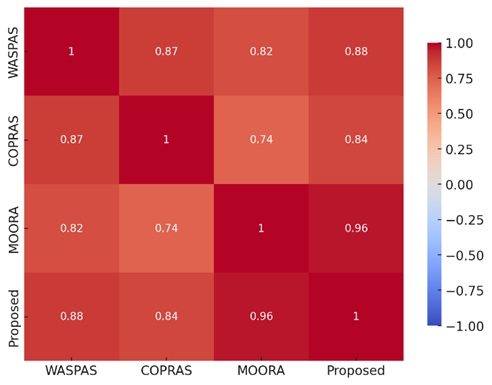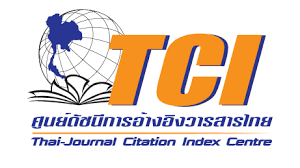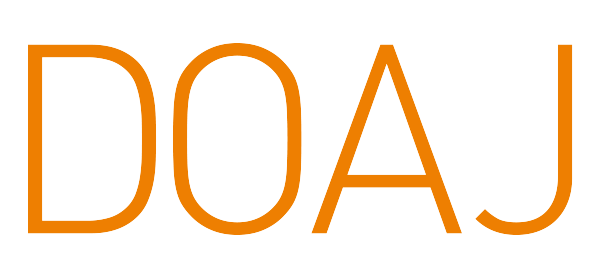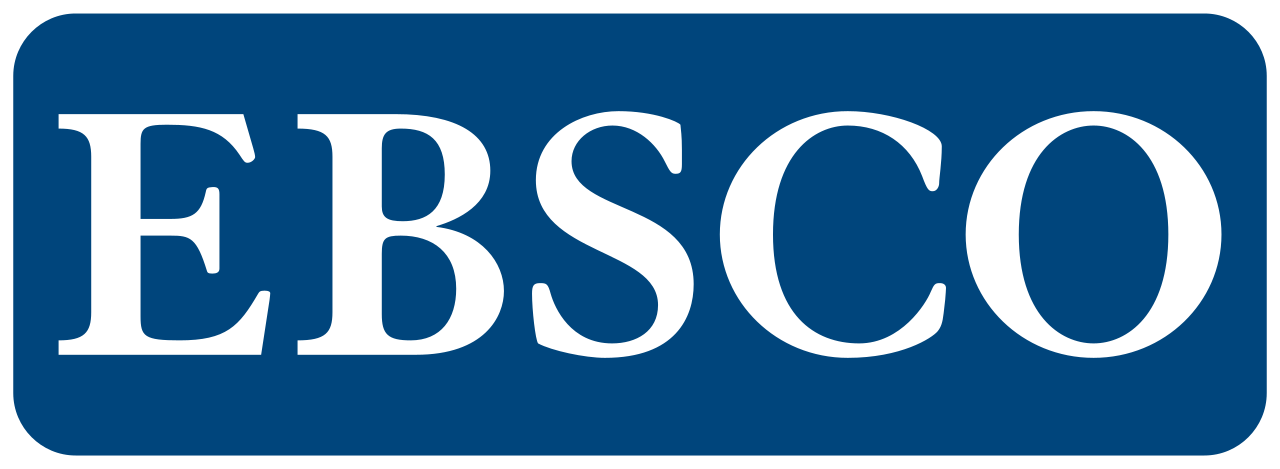A Hybrid Method based on BWM and TOPSIS-LP Model to Assess Computer Numerical Control Machines
Keywords:
Best-worst method, multi-attribute decision-making, TOPSIS, TOPSIS linear programming model, Best-Worst Method, Multi-Attribute Decision-Making, TOPSIS, TOPSIS linear programming model, Computer Numerical Control machinesAbstract
The escalating global competitiveness within the industrial sector has necessitated a critical requirement to enhance facilities to meet market demands. In this context, the selection of computer numerical control (CNC) machines plays a vital role in enhancing productivity and manufacturing flexibility. This study presents a hybrid method combining the Best-Worst Method (BWM) with a novel TOPSIS linear programming (TOPSIS-LP) model for CNC machine selection. The BWM is employed to address information challenges and simplify data collection by assigning weights to specified criteria. These weights are then utilized in the TOPSIS-LP model to rank alternatives based on their closeness coefficients. A numerical illustration is conducted to validate the proposed model, with outcomes compared to established Multi-Attribute Decision-Making (MADM) methodologies. The Spearman correlation matrix reveals strong correlations between the proposed method and existing methods, such as MOORA (0.96) and WASPAS (0.88), highlighting the hybrid approach's reliability. This method provides a straightforward and reliable tool for organizations to make informed CNC machine selections, ultimately improving their productivity and manufacturing capabilities.
References
H. K. Alfares and S. O. Duffuaa, "Simulation-based evaluation of criteria rank-weighting methods in multi-criteria decision-making," International Journal of Information Technology & Decision Making, vol. 15, no. 1, pp. 43-61, 2016.
M. Azizi, "Analytical hierarchy process for optimised choice of machines for secondary wood industries," Journal of the Institute of Wood Science, vol. 19, no. 1, pp. 35-43, 2009.
O. Bologa, R.E. Breaz, S.G. Racz, and M. Crenganiş, "Using the Analytic Hierarchy Process (AHP) in Evaluating the Decision of Moving to a Manufacturing Process Based Upon Continuous 5 Axes CNC Machine-tools," Procedia Computer Science, vol. 91, pp. 683-689, 2016. doi:10.1016/j.procs.2016.07.171.
A. Camci, G. T. Temur, and A. Beskese, "CNC router selection for SMEs in woodwork manufacturing using hesitant fuzzy AHP method," Journal of Enterprise Information Management, vol. 31, no. 4, pp. 529-549, 2018. doi:10.1108/JEIM-01-2018-0017.
E. Çimren, B. Çatay, and E. Budak, "Development of a machine tool selection system using AHP," The International Journal of Advanced Manufacturing Technology, vol. 35, no. 3, pp. 363-376, 2007. doi:10.1007/s00170-006-0714-0.
L.I. Cioca, R.E. Breaz, and S.G. Racz, "Selecting the Safest CNC Machining Workshop Using AHP and TOPSIS Approaches," Safety, vol. 7, no. 2, p. 27, 2021. doi:10.3390/safety7020027.
S. Z. M. Dawal, N. Yusoff, H.T. Nguyen, and H. Aoyama, "Multi-Attribute Decision-Making for CNC machine tool selection in FMC based on the integration of the improved consistent fuzzy AHP and TOPSIS," Engineering Journal, vol. 3, no. 2, pp. 15-31, 2012. doi:10.11113/aej.v3.15388.
C. Fu and Y. Wang, "An interval difference based evidential reasoning approach with unknown attribute weights and utilities of assessment grades," Computers & Industrial Engineering, vol. 81, pp. 109-117, 2015. doi:10.1016/j.cie.2014.12.031.
Y. T. İç, "An experimental design approach using TOPSIS method for the selection of computer-integrated manufacturing technologies," Robotics and Computer-Integrated Manufacturing, vol. 28, no. 2, pp. 245-256, 2012. doi:10.1016/j.rcim.2011.09.005.
N. Tho, S. Dawal, N. Yusoff, F. Tahriri, and H. Aoyama, "Selecting a CNC machine tool using the intuitionistic fuzzy TOPSIS approach for FMC," Applied Mechanics and Materials, vol. 315, pp. 196-205, 2013. doi:10.4028/www.scientific.net/AMM.315.196.
C. Kao, "Weight determination for consistently ranking alternatives in multiple criteria decision analysis," Applied Mathematical Modelling, vol. 34, no. 7, pp. 1779-1787, 2010.
M. Keshavarz-Ghorabaee, K. Govindan, M. Amiri, E. K. Zavadskas, and J. Antuchevičienė, "An integrated type-2 fuzzy decision model based on WASPAS and SECA for evaluation of sustainable manufacturing strategies," Journal of Environmental Engineering and Landscape Management, vol. 27, no. 4, pp. 187-200, 2019.
N. Shirazi, Z. Yusop and K. Ahmed, "Weighting Methods and their Effects on Multi-Criteria Decision Making Model Outcomes in Water Resources Management," Cham: Springer, pp. 101-105, 2015.
S. Sun, "Assessing computer numerical control machines using data envelopment analysis," International Journal of Production Research, vol. 40, no. 9, pp. 2011-2039, 2002. doi:10.1080/00207540210123634.
M. Taka, S. P. Raygor, R. Purohit, and V. Parashar, "Selection of tool and work piece combination using Multiple Attribute Decision Making Methods for Computer Numerical Control turning operation," Materials Today: Proceedings, vol. 4, no. 2, pp. 1199-1208, 2017. doi:10.1016/j.matpr.2017.01.138.
G.H. Tzeng, T.Y. Chen, and J.C. Wang, "A weight-assessing method with habitual domains," European Journal of Operational Research, vol. 110, no. 2, pp. 342-367, 1998. doi:10.1016/S0377-2217(97)00246-4.
N. Wichapa and P. Khokhajaikiat, "A novel holistic approach for solving the multi-criteria transshipment problem for infectious waste management," Decision Science Letters, vol. 8, no. 4, pp. 441-454, 2019.
N. Wichapa, P. Khokhajaikiat, and K. Chaiphet, "Aggregating the results of benevolent and aggressive models by the CRITIC method for ranking of decision-making units: A case study on seven biomass fuel briquettes generated from agricultural waste," Decision Science Letters, vol. 10, no. 1, pp. 79-92, 2021.
N. Wichapa, A. Lawong, and M. Donmuen, "Ranking DMUs using a novel combination method for integrating the results of relative closeness benevolent and relative closeness aggressive models," International Journal of Data and Network Science, vol. 5, no. 3, pp. 401-416, 2021.
M. Şahin, "A comprehensive analysis of weighting and multicriteria methods in the context of sustainable energy," International Journal of Environmental Science and Technology, vol. 18, pp. 1-26, 2020. doi:10.1007/s13762-020-02922-7.
X. Xu, "A note on the subjective and objective integrated approach to determine attribute weights," European Journal of Operational Research, vol. 156, no. 2, pp. 530-532, 2004. doi:10.1016/S0377-2217(03)00146-2.
D. Diakoulaki, G. Mavrotas, and L. Papayannakis, "Determining objective weights in multiple criteria problems: The critic method," Computers & Operations Research, vol. 22, no. 7, pp. 763-770, 1995. doi:10.1016/0305-0548(94)00059-H.
H. Deng, C.H. Yeh, and R. J. Willis, "Inter-company comparison using modified TOPSIS with objective weights," Computers & Operations Research, vol. 27, no. 10, pp. 963-973, 2000. doi:10.1016/S0305-0548(99)00069-6.
T.L. Saaty, "Rank Generation, Preservation, and Reversal in the Analytic Hierarchy Decision Process," Decision Sciences, vol. 18, no. 2, pp. 157-177, 1987.
J. Rezaei, "Best-worst multi-criteria decision-making method," Omega, vol. 53, pp. 49-57, 2015. doi:10.1016/j.omega.2014.11.009.
W. Edwards and F. H. Barron, "SMARTS and SMARTER: Improved simple methods for multiattribute utility measurement," Organizational Behavior and Human Decision Processes, vol. 60, no. 3, pp. 306-325, 1994. doi:10.1006/obhd.1994.1087.
J.F. Ding, J.H. Weng, and C.C. Chou, "Assessment of key risk factors in the cold chain logistics operations of container carriers using best worst method," International Journal of Refrigeration, 2023. doi:10.1016/j.ijrefrig.2023.06.013.
A. Lawong, N. Kriengkorakot, and P. Kriengkorakot, "A Hybrid BWM-MCLP Method for Selecting Emergency Medical Service Locations: A Case Study in Maha Sarakham Province, Thailand," Engineering Access, vol. 9, no. 1, pp. 102-108, 2023.
P. Liu, B. Zhu, and P. Wang, "A weighting model based on best–worst method and its application for environmental performance evaluation," Applied Soft Computing, vol. 103, p. 107168, 2021. doi:10.1016/j.asoc.2021.107168.
Y. Ming, L. Luo, X. Wu, H. Liao, B. Lev, and L. Jiang, "Managing patient satisfaction in a blood-collection room by the probabilistic linguistic gained and lost dominance score method integrated with the best-worst method," Computers & Industrial Engineering, vol. 145, p. 106547, 2020. doi:10.1016/j.cie.2020.106547.
A. Mostafaeipour, M. Alvandimanesh, F. Najafi, and A. Issakhov, "Identifying challenges and barriers for development of solar energy by using fuzzy best-worst method: A case study," Energy, vol. 226, p. 120355, 2021. doi:10.1016/j.energy.2021.120355.
S. Önüt, S. Soner Kara, and T. Efendigil, "A hybrid fuzzy MCDM approach to machine tool selection," Journal of Intelligent Manufacturing, vol. 19, no. 4, pp. 443-453, 2008. doi:10.1007/s10845-008-0095-3.
C. Hwang and K. Yoon, "Multiple attribute decision making: methods and applications a state-of-the-art survey," in Multiple attribute decision making: Lecture Notes in Economics and Mathematical Systems, M. Beckmann and H.P. Kunzi, Eds. Heidelberg: Springer Berlin, 1981, pp. 58-191.
P. Wang, Y. Li, Y.H. Wang, and Z.Q. Zhu, "A New Method Based on TOPSIS and Response Surface Method for MCDM Problems with Interval Numbers," Mathematical Problems in Engineering, vol. 2015, p. 938535, 2015. doi:10.1155/2015/938535.
W. Atthirawong, W. Panprung, and P. Wanitjirattikal, "An Integrated Factor Analysis-Technique for Order Preference by Similarity to Ideal Solution for Location Decision in ASEAN Region: A Case Study of Thai Fabric Manufacturing Plant," Current Applied Science and Technology, vol. 23, no. 1, pp. 1-16, 2023. doi:10.55003/cast.2022.01.23.012.
W. Atthirawong, "Application of TOPSIS Method to Green Supplier Selection for a Thai OTOP Producer," Current Applied Science and Technology, vol. 20, no. 1, pp. 144-155, 2020.
D. Di Caprio and F. J. Santos-Arteaga, "Uncertain interval TOPSIS and potentially regrettable decisions within ICT evaluation environments," Applied Soft Computing, vol. 142, p. 110301, 2023. doi:10.1016/j.asoc.2023.110301.
Z. Li, Z. Luo, Y. Wang, G. Fan, and J. Zhang, "Suitability evaluation system for the shallow geothermal energy implementation in region by Entropy Weight Method and TOPSIS method," Renewable Energy, vol. 184, pp. 564-576, 2022.
S.A. Oke, K.O. Okponyia, W.O. Adedeji, and O.M. Adeyemi, "Applications of AHP, FAHP, BWM, Entropy, and CRITIC methods in electrohydraulic forming process parametric evaluation for automotive panels using the 1100 aluminium alloy sheets," International Journal of Industrial Engineering and Engineering Management, vol. 4, no. 2, pp. 75-86, 2022.
D.E. Ighravwe and S.A. Oke, "Ranking maintenance strategies for sustainable maintenance plan in manufacturing systems using fuzzy axiomatic design principle and fuzzy-TOPSIS," Journal of Manufacturing Technology Management, vol. 28, no. 7, pp. 961-992, 2017.
D.E. Ighravwe and S.A. Oke, "A multi-attribute framework for determining the competitive advantages of products using grey-TOPSIS cum fuzzy-logic approach," Total Quality Management & Business Excellence, vol. 29, no. 7-8, pp. 762-785, 2018.
B.A. Sawyerr, E. Fasina, W.O. Adedeji, M.K. Adeniran, S.A. Oke, and J. Rajan, "A fuzzy TOPSIS method for surface integrity criteria ranking using the wire electrical discharge machining process," Journal of Engineering and Applied Science, vol. 70, pp. 1-20, 2023. doi:10.1186/s44147-023-00292-8.
P. To-on, N. Wichapa, and W. Khanthirat, "A novel TOPSIS linear programming model based on response surface methodology for determining optimal mixture proportions of lightweight concrete blocks containing sugarcane bagasse ash," Heliyon, vol. 9, no. 7, p. e17755, 2023. doi:10.1016/j.heliyon.2023.e17755.
N. Wichapa and S. Sodsoon, "A Relative Closeness Coefficient Model Based on the Distance of Virtual DMUs Cross-Efficiency Method for Ranking Thai Economic Development," Engineering Letters, vol. 31, no. 1, 2023.
A. Sriburam, N. Wichapa, and W. Khanthirat, "A novel TOPSIS linear programming model based on the Taguchi method for solving the multi-response optimization problems: A case study of a fish scale scraping machine," Engineered Science, vol. 23 no. 1 p. 882, 2023.
A. Lawong, A. Kejornrak, N. Kriengkorakot, and P. Kriengkorakot, "A BWM-TOPSIS Linear Programming Model for Evaluating the Performance of Health-Promoting Hospitals with McKinsey 7s Framework in Organizational Management," Journal of Current Science and Technology, vol. 23, no. 1, p. 882, 2024. doi:10.59796/jcst.V14N2.2024.23.
N. Pawaree, S. Phokha, and C. Phukapak, "Multi-response optimization of charcoal briquettes process for green economy using a novel TOPSIS linear programming and genetic algorithms based on response surface methodology," Results in Engineering, vol. 22, p. 102226, 2024. doi:10.1016/j.rineng.2024.102226.
W. Phuangpornpitak, W. Boonchom, K. Suphan, W. Chiengkul, and T. Tantipanichkul, "Application of TOPSIS-LP and New Routing Models for the Multi-Criteria Tourist Route Problem: The Case Study of Nong Khai, Thailand," Engineering, Technology & Applied Science Research, vol. 14, no. 4, pp. 14929-14938, 2024.
E.K. Zavadskas, Z. Turskis, J. Antucheviciene, and A. Zakarevicius, "Optimization of Weighted Aggregated Sum Product Assessment," Elektron. Elektrotech., vol. 122, no. 6, pp. 3-6, 2012.
E.K. Zavadskas, A. Kaklauskas, and V. Šarka, "The new method of multicriteria complex proportional assessment of projects," 1994.
W.K. Brauers and E.K. Zavadskas, "The MOORA method and its application to privatization in a transition economy," Control Cybern., vol. 35, no. 2, pp. 445-469, 2006.

Downloads
Published
How to Cite
Issue
Section
License

This work is licensed under a Creative Commons Attribution-NonCommercial-NoDerivatives 4.0 International License.








